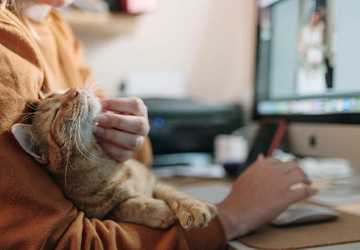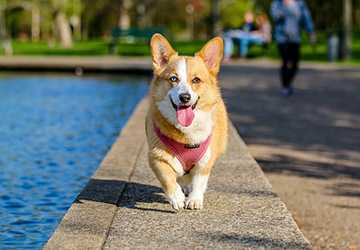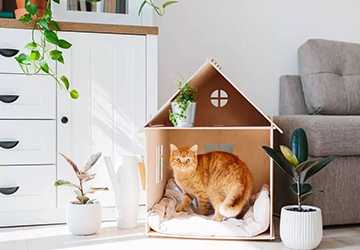How to Pet-Proof Your Home: A Complete Guide
Introduction
Bringing a pet into your home is a joyful experience. They add energy, love, and a sense of companionship to your life. However, your home environment needs to be adjusted to ensure it's safe for your new family member. In this article, we will talk about pet-proofing your home tips, making your living space a guide to a pet-friendly home, and why keeping your home safe for pets is crucial.

Basic Steps for Pet-Proofing
Remove Hazardous Items
The first step in pet-proofing is removing anything that might harm your pet. This could be small objects they might swallow, poisonous plants, or chemicals. Even certain foods that are safe for humans can be dangerous for pets.
Keep Electrical Cords Out of Reach
Pets, especially puppies and kittens, like to chew. Unfortunately, they cannot differentiate between a toy and an electrical cord. Electrical shock is a serious concern, so keep all cords out of your pet's reach.
Secure Cabinets
Just like toddlers, pets can get into things they shouldn't. Using child-proof locks on cabinets, especially where you keep cleaning supplies or medicines, is a good idea when keeping your home safe for pets.
Create a Pet-Friendly Space
Choose Pet-Friendly Furniture
When selecting furniture, think about how it will hold up against scratching and chewing. Leather and synthetic fibres are generally more resistant than other materials.
Make Space for Them
Designate specific areas for your pet to eat, sleep, and play. Having a space they can call their own will make them feel more secure and lessen the chances of venturing into areas where they shouldn't be.
Seasonal Pet-Proofing Your Home Tips
During Summers
Please keep your pet hydrated and never leave them in a car unattended. Car temperatures can escalate quickly, making it a hazardous environment for pets.
During Winters
Pets can get frostbite, too! Make sure they have a warm place to sleep and keep them inside during extreme cold.

Why Keeping Your Home Safe for Pets Is Crucial
Keeping your home safe for pets is not just about preventing accidents; it's about creating an environment where you and your pet can live harmoniously. A safe home reduces stress for everyone involved and allows your pet to live a healthy, happy life.
The Importance of Training
While physical adjustments to your living space are vital, training your pet is equally crucial to keeping your home safe for pets. Your pet should understand basic commands like "sit," "stay," and "no." This can be a lifesaver in situations where you need immediate control.
Reward-Based Training
Utilize treats or toys as positive reinforcement to train your pet effectively. This not only strengthens your bond but also makes them associate good behaviour with rewards.
Technology and Pet Safety
Use of Pet Cameras
In our modern world, technology can be a helpful ally in keeping your home safe for pets. Pet cameras can provide live video feeds of what your pet is doing while you are away.
Smart Doors and Collars
Intelligent pet doors can be programmed to open only for your pet, keeping unwanted animals out. Similarly, GPS-enabled collars can help you locate your pet if they venture out unexpectedly.
Preparing for Emergencies
Pet First-Aid Kit
Just like humans, pets can suffer from sudden health issues or accidents. Having a pet-specific first-aid kit can be highly beneficial. Include bandages, antiseptics, and any medication your pet may need.
Emergency Contacts
Keep a list of emergency contacts that are easily accessible. This should include your vet's number, the closest animal emergency room, and poison control.
A Healthy Diet: An Often Overlooked Aspect of a Guide to Pet-Friendly Home
When we discuss pet-proofing your home tips, one topic often overlooked is the importance of a proper diet. Feeding your pet a balanced, age-appropriate diet can keep them healthy and less inclined to chew or scratch out of frustration or lack of energy.
Tech Solutions for Pet Safety
GPS Collars
One of the modern pet-proofing tips for your home includes using technology like GPS pet collars. If your pet manages to escape, a GPS collar will help you locate them much more quickly, adding an extra layer to your guide to a pet-friendly home.
Smart Cameras
Installing smart cameras in various parts of your home can help you monitor your pets even when you are not there. This technology is beneficial for keeping your home safe for pets when you're away. Some advanced models even allow you to dispense treats or speak to your pet through a microphone.
Playtime Safety
Choose Toys Wisely
Pets love to play, but not all toys are safe. Always choose toys appropriate for your pet's size and chewing habits. This does not just make playtime more fun; it's also crucial for keeping your home safe for pets.
Supervise Playtime
Even with the safest toys, supervision is critical. A piece could break off and become a choking hazard, so always keep an eye out during playtime.
Feeding Safely: Beyond Regular Pet Food
Human Foods to Avoid
A common mistake many pet owners make is feeding their pets human food that may harm them. Foods like chocolate, grapes, and onions can be toxic to certain animals. Awareness of these dangers is valuable.
Use Pet-Proof Containers
Special pet-proof containers for food storage can help in keeping your home safe for pets. These containers are designed to be hard for pets to open but easy for humans.
Conclusion: A Guide to Pet-Friendly Home
By following this guide to a pet-friendly home, you'll be providing a safe and welcoming environment for your new family member. The tips provided can help in pet-proofing your home and ensure the well-being of your pet.Remember, a pet-proof home is a pet-happy home. Make these changes today for a safer, more comfortable living space for everyone.







